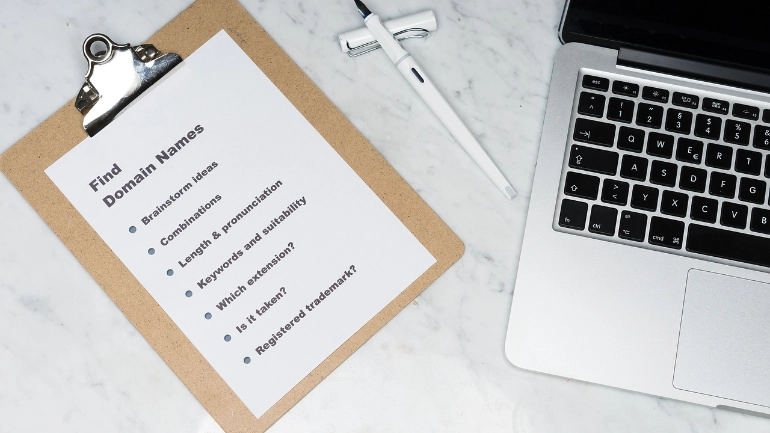- May 12, 2020
 0
0- by A2 Marketing Team
Your website’s About page may seem like a small thing. However, it provides a crucial way for customers to get to know your business. An About page that’s either nonexistent or only offers basic information is a missed opportunity.
Fortunately, putting together an outstanding About page is easy, although it does require some thought. You’ll want to fill it with inviting text and imagery, professional photos of you and your team, and a compelling story. You’ll also need to make sure it contains everything the average visitor will need to know.
In this guide, we’ll help you craft an About page that represents you and your business effectively. Let’s dive in!
Why Your About Page Matters
It can be tempting to skip creating an About page for your site, especially if you’re a one-man operation. However, your About page is the perfect chance for you to put a ‘face’ on your business. People like seeing who you are and what you value. This is part of what sets smaller companies apart from big, ‘faceless’ corporations.
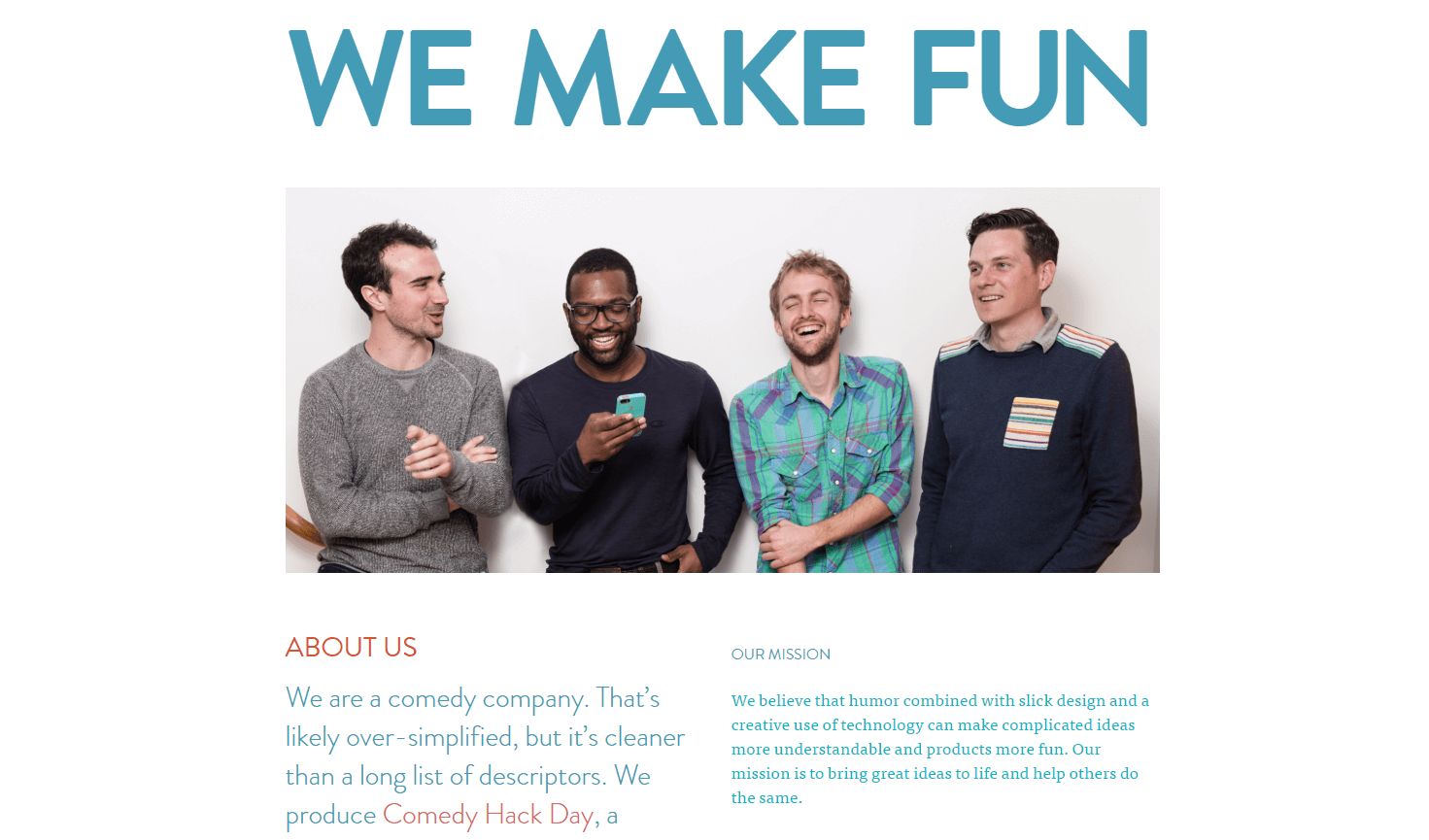
The About page gives people a chance to get to know you and become invested in your mission. After all, you want people to care about choosing your business, even if they can get cheaper goods at the Walmart down the road (for example). Some independent stores may even benefit from a Why Shop With Us? section.
In addition, the About page is a convenient home for important contact and service details. It will be one of the first places people look for key information about what your business does and how to get in touch. This means you’ll want to think carefully about exactly what you include on your site’s About page.
5 Elements Your Site’s About Page Needs
Every site is different, but there are some basic elements most successful ones have in common. In this section, we’ll go over a few things any About page should include. If you incorporate these five elements, you’ll have a robust page that will help visitors find what they want and invest emotionally in your business.
1. An ‘About Us’ Statement
The About Us statement is one of the most essential parts of an About page. This is the chance to share your business’ narrative, and elaborate on your personal experience and credentials (or that of your team):

This doesn’t have to be a literal history or a timeline with dates – although both can be a nice touch. What it should include is the basic story of your company, such as who you are and how you got into this business. The best way to do this effectively is to check out examples of other outstanding About pages.
If you have more than one key team member, it’s also smart to include a bio section somewhere underneath your About Us statement. Each bio should be a brief statement elaborating on the individual’s credentials and history with the company. This gives you a chance to differentiate your team members, and show off the diversity of your team’s skills.
Depending on your brand, you could create a very serious About Us statement, or incorporate a little humor. If your business is artistic, for example, you might want to include one or two unique details (for instance, that you live in “a house with a secret door”). When in doubt, it’s better to aim for a personal, honest statement than something cold and corporate.
2. Photos
Personal photos are another vital element of any About page. After all, people are naturally drawn to faces. You can either go with a pro (which should cost somewhere around $400 to $800), or take your own professional DIY headshots.
If you have more than five employees, consider using a group shot instead of a long laundry list of photos and bios. A group photo can highlight your team’s chemistry, since eye contact, physical closeness, and genuine smiles demonstrate subconscious signs of camaraderie:
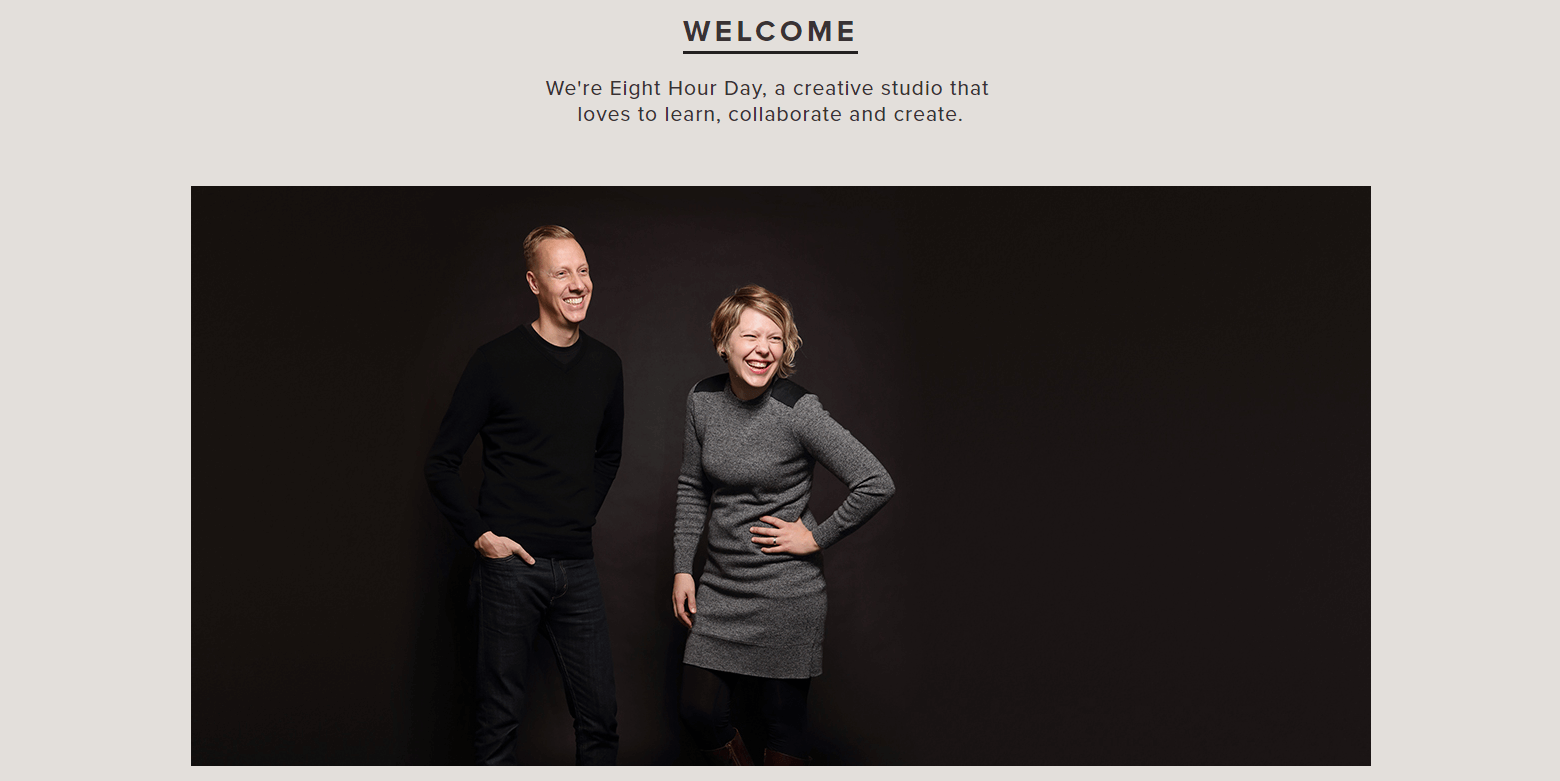
So instead of bombarding visitors with ten or more individual bios, highlight a few key leaders, and use a group photo for the rest of the staff. This way, everyone gets to feel included, and your About page still feels focused.
3. A List of Services
Research shows that most people only skim text online. A service list lets you tell customers exactly what you do at a glance. If you have a service-oriented business, such as a painting or plumbing company, you can use this section to highlight your specific offerings:
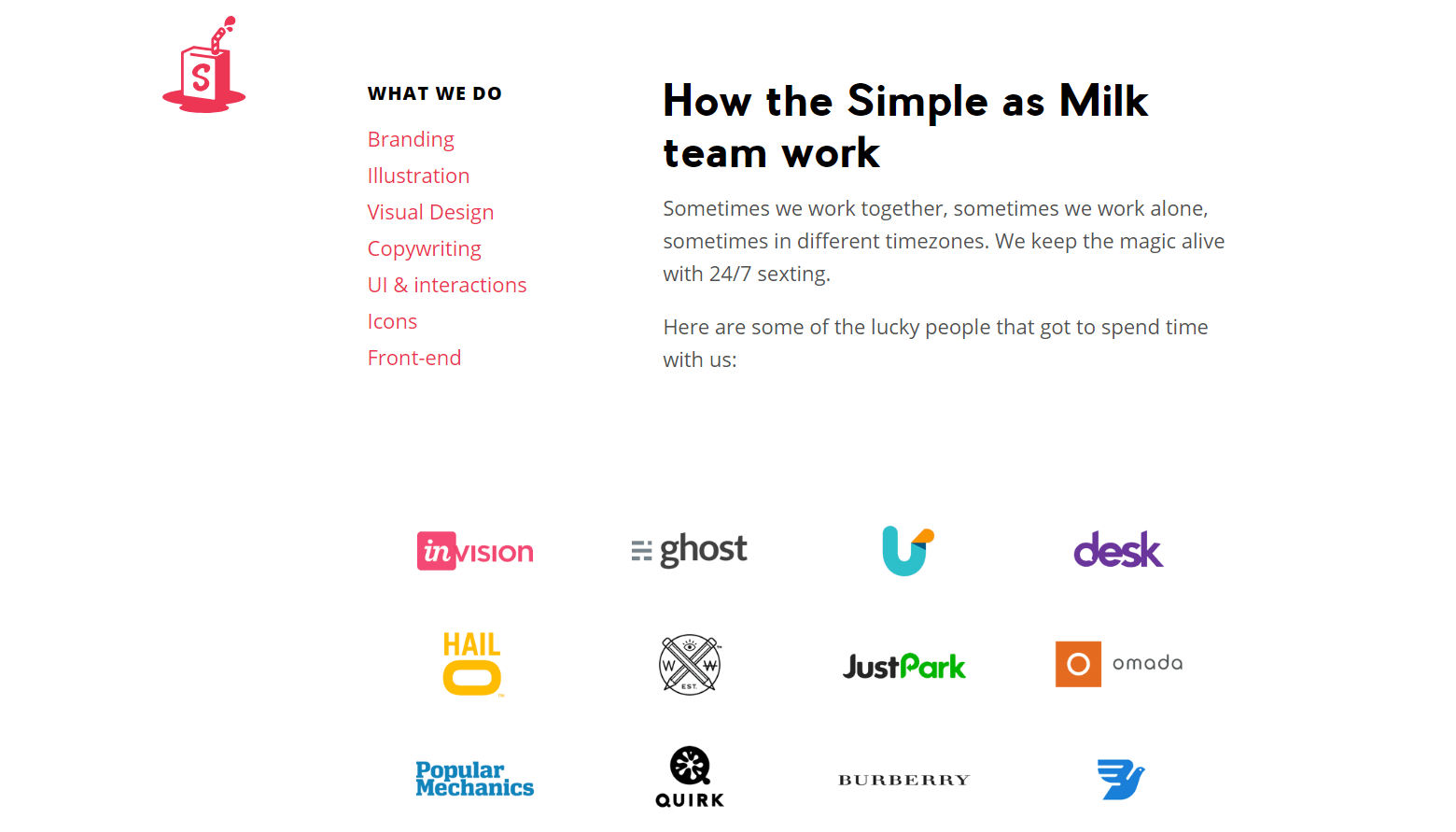
However, even if you don’t offer literal ‘services’, consider highlighting the main points of what you do provide. For example, a restaurant might list that it offers breakfast, lunch, and dinner options.
In either case, the service list should be brief and concise. If necessary, you can link out to fuller descriptions of each individual offering. In addition, when describing your services, remember to focus on how they directly benefit the customer or client.
4. Contact Info
Even if you have a dedicated contact page, listing contact info on your About page as well helps visitors get in touch with you easily. At the minimum, including an email address is a must. For service-oriented businesses, a phone number will also help people who have questions that need immediate answers.
If your business has a physical location, you may also want to consider adding a Google Map to the page. This helps visitors easily find directions to your business from anywhere in the world:
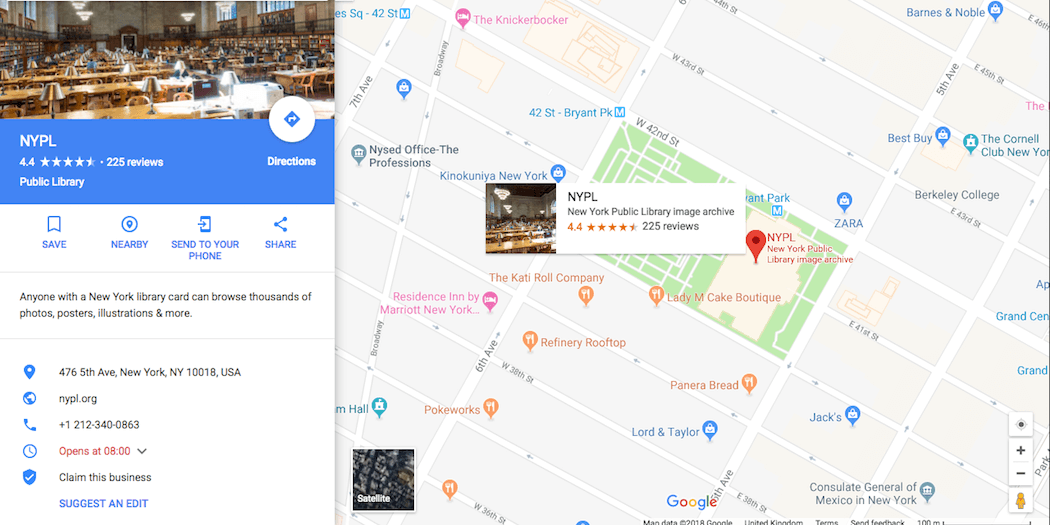
Above all, give your visitors options for how they would like to contact you. For example, a third of customers prefer social media customer support to phone or email, so links to your social media profiles may be in order. A contact form is also an excellent resource to offer.
5. Brevity and Organization
When you start putting the above elements together to create your About page, you’ll want to keep everything brief and clearly organized. All of its individual items should be easy to skim through and find.
People tend to read online by skimming through headers, and then reading the content that applies to them. This means that it’s best to divide your About page into distinct sections. Each section should have a heading that makes its purpose clear, and shouldn’t be overly long:
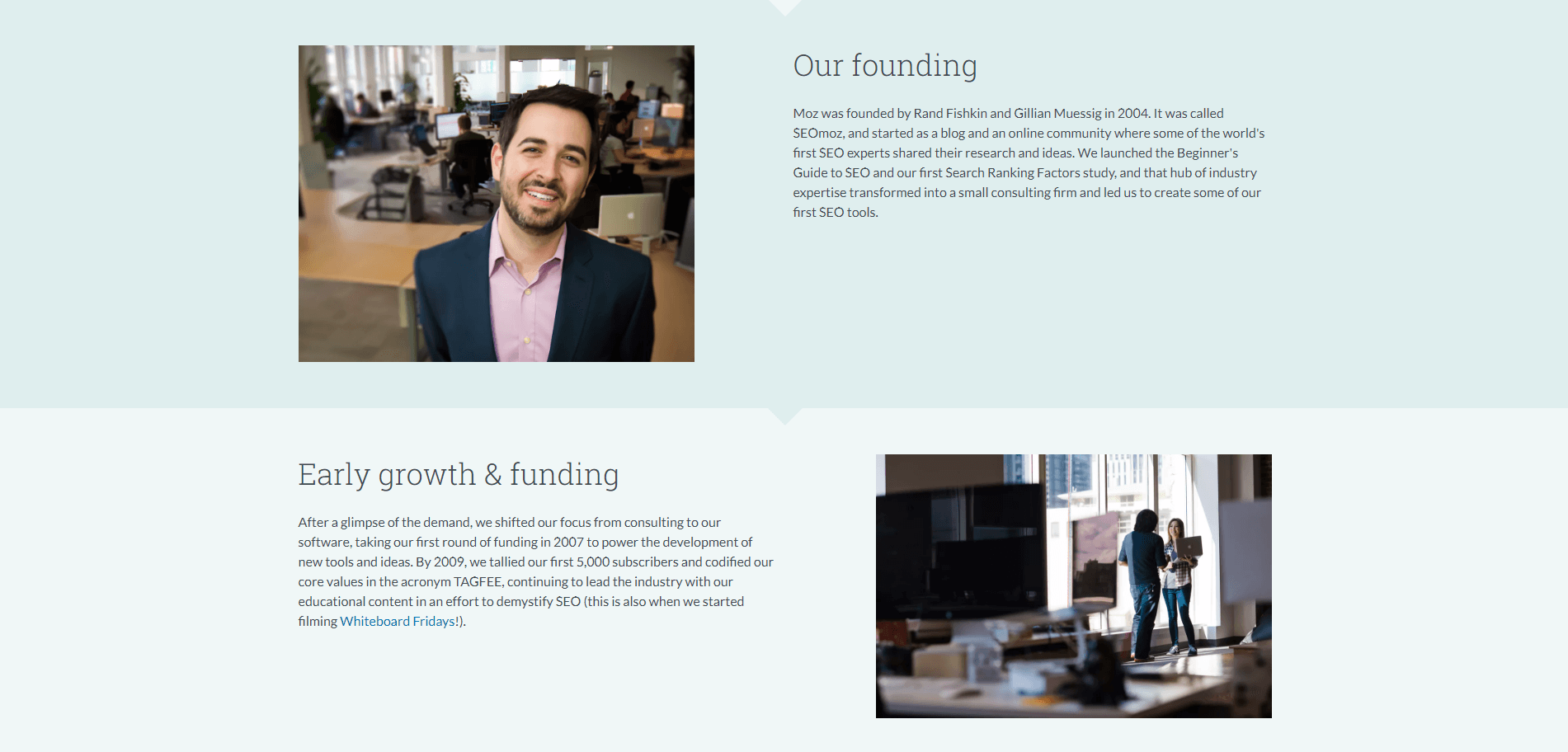
More specifically, it’s best to aim for about 50-100 words maximum per section. If you need more space, think about providing an overview on the About page, and then linking to a separate page (or multiple pages) with more complete information if necessary.
Conclusion
An About page is essentially the face of your business’ website. It can have a huge impact on how visitors perceive your site and company. Including all the vital information and adding a personal, human touch can go a long way towards making genuine connections.
In particular, including these five elements will ensure that your About page is compelling and provides visitors with all the information they need:
- An ‘About Us’ statement
- Photos
- A list of services
- Contact info
- Brevity and organization
Image credit: PROTVZ Design.


